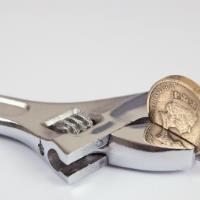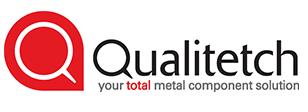 Add My Company
Add My Company
Sign In

The Royal Mint.
This most British of institutions is responsible, in part, for the smooth running of our country and its trade.
Appointed by the Crown as the sole producer of Great Britain’s currency, the old stamping process employed by the Royal Mint is considered, by some, as sacred.
But with an ever-advancing society, enthusiastic about embracing new technologies, it is interesting to consider what other options we have. Of course, paper currency will always need to be produced in a way that ensures it can be distinguished from any counterfeit currency and certain facets, like authenticity and tracking, need to be considered.
Nevertheless, with coins especially, the question of an alternative method of production is still up for discussion.
So…
Could we ever photo etch coins?
Well the simple answer is, of course we could, and we do, as long as they are for personal use as a memorabilia piece. Think corporate gifts, keepsakes from special events, or alternatives to sporting medals and trophies.
The real question though is whether or not the Royal Mint would ever consider photo etching to be a viable alternative to the traditional stamping process used for currency at present.
Now, a lot depends on the metals used for the coins, as some are simply not suitable for processes like photo chemical etching. However, with a slight change in the materials used, could we see etched currency in pockets everywhere?
Let’s start by looking at how the Royal Mint makes coins at present.
The Blanks:
The first stage in any coin’s life is the transition from everyday metal to perfectly-formed (albeit blank) coin, hence the name, blanks.
These blanks are made when the appropriate alloy is melted in the furnace, and extracted as a continuous strip. The strip is cut into coils which are then milled, passing through rollers to create the correct thickness.
From these thinner strips, discs are punched on a blanking press, creating the blanks that will eventually become coins.
The Dies:
Not quite the same as the traditional designing and stamp making associated with coin production in centuries gone by, modern die creation is a far simpler and more technologically advanced process.
An oversized plaster model is scanned onto a computer via a ruby-tipped probe, and this digital rendering then gets machine-engraved into a piece of steel (a reduction punch), which is used to make the dies that will strike the coins.
Striking:
The third and final stage of a coin’s life, before it heads out into the big wide world, is striking.
The blanks are put through the coining press, which sandwiches the discs between a pair of dies with such pressure that the design transfers and the blank becomes a coin.
See more on the Royal Mint’s coin production process, here. Now, though this process is an efficient, effective and long-standing one, what would it look like if we photo etched coins instead?
Well, we could skip the blanking stage because we’d use sheet metal of the appropriate thickness and material.
Similar to the digital rendering of the dies, we’d have a digital design that would be printed onto the acetate, ready for the photoresist and development stage. Then, we’d pop the sheets through the chemical etching machine and wait for even the most intricately designed coins to come out the other end.
Once they were all washed and cleaned, free from photoresist and chemicals, they’d go through quality control and, if necessary, any forming or plating processes.
At the end of it, there’d be a nice batch of perfectly-formed and precision-manufactured coins, ready to fill up everyone’s pockets.
It’s not quite the noisy and multi-faceted spectacle put on by the Royal Mint, but it would certainly get the job done in an efficient, cost-effective and reliable way.
So, who knows? In the future, the Royal Mint may well take to photo etching the nation’s currency. For now though, qualitetch.co.uk will continue showing the world what it can do with its chemical etching and metal component manufacturing skills.
For more information on Blog: Photo Etched Currency: Is this the Future? talk to Qualitetch Components Ltd
Enquire Now
List your company on FindTheNeedle.

